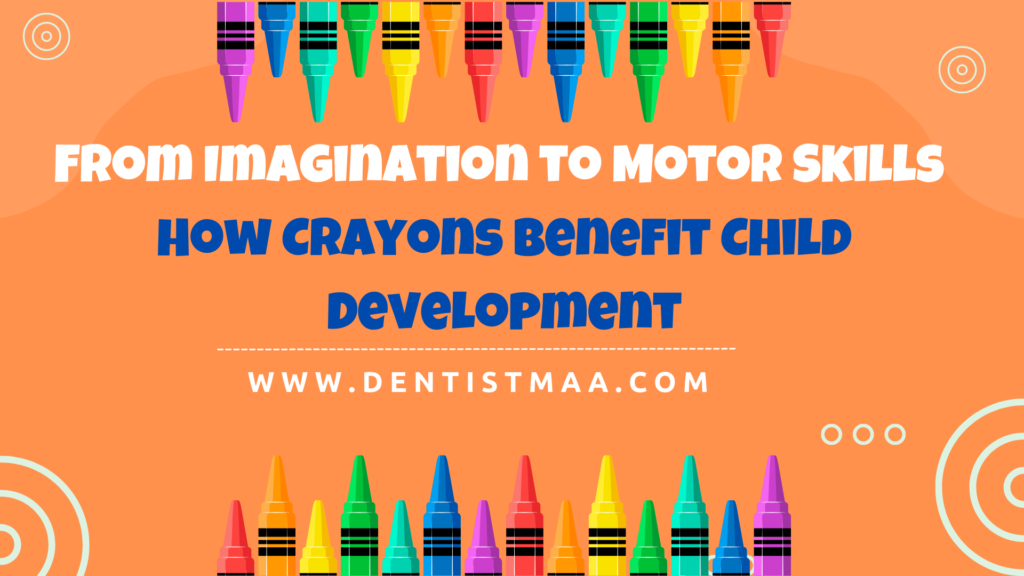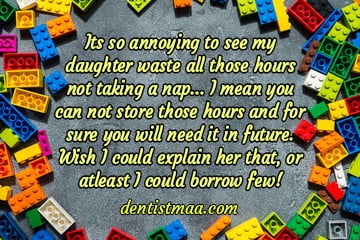Crayons are the best things to give your toddler to play with. The vibrant colours, the grasp, and the scribbling all help their development and involve play. Playing with crayons is a timeless activity that sparks joy and creativity in toddlers. It’s more than just a fun pastime. It’s a crucial part of early childhood development. This article delves into the benefits of crayon play, highlighting its positive impact on toddlers through the lens of positive parenting and the Montessori approach.
When Should You Start Using Crayons?
Crayons can be introduced to toddlers as early as 12 to 18 months old. Children are developing the motor skills needed to hold and manoeuvre crayons at this stage. Choosing non-toxic, chunky crayons that are easy for little hands to grasp is essential. The goal is not perfection but exploration and enjoyment.
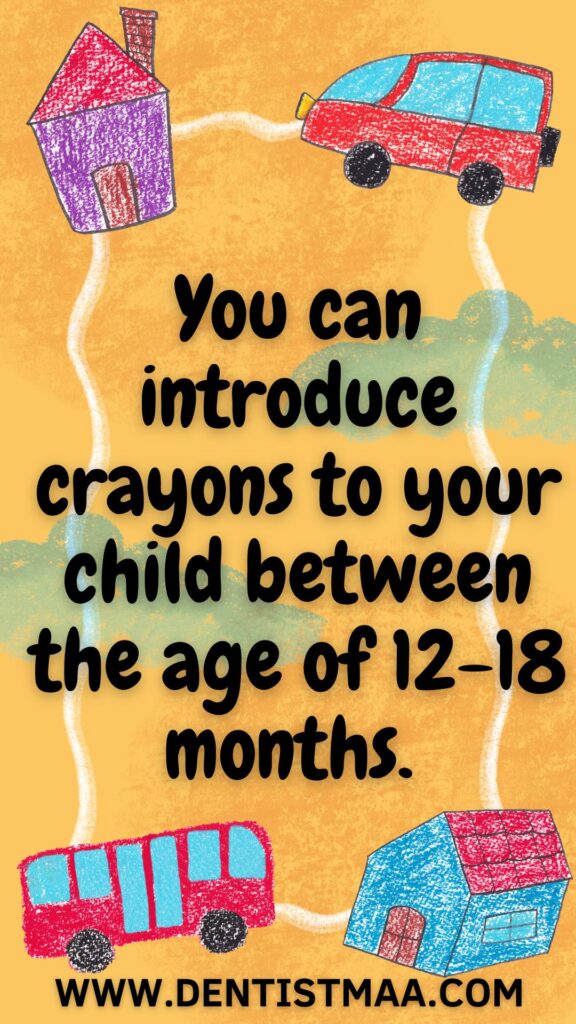
12-18 Months
- Introduction to Crayons: At this age, toddlers can start using large, chunky crayons that are easier for their small hands to grip.
- Supervision: Ensure close supervision to prevent them from putting crayons in their mouths.
18-24 Months
- Refinement of Skills: Children can begin to make more deliberate marks and scribbles.
- Encouragement: Encourage them to experiment with different colours and shapes.
2-3 Years
- Developing Motor Skills: Fine motor skills improve, allowing children to hold crayons with a more refined grip.
- Guided Activities: Introduce simple coloring books and guided drawing activities.
3-4 Years
- Creativity and Imagination: Children start to draw recognizable shapes and figures.
- Artistic Expression: Encourage creative expression and storytelling through their drawings.
4-5 Years
- Skill Building: By now, children should be comfortable using crayons and can begin more detailed colouring and drawing.
- Educational Use: Integrate crayons into learning activities, such as tracing letters and numbers.
The Importance of the Grip
One of the first skills toddlers develop through crayon play is the ability to hold the crayon correctly. The grip evolves from a palmar grasp (holding the crayon with the whole hand) to a more refined tripod grasp (using the thumb, index, and middle finger). This progression is crucial for developing fine motor skills, which are foundational for later tasks such as writing and buttoning clothes.
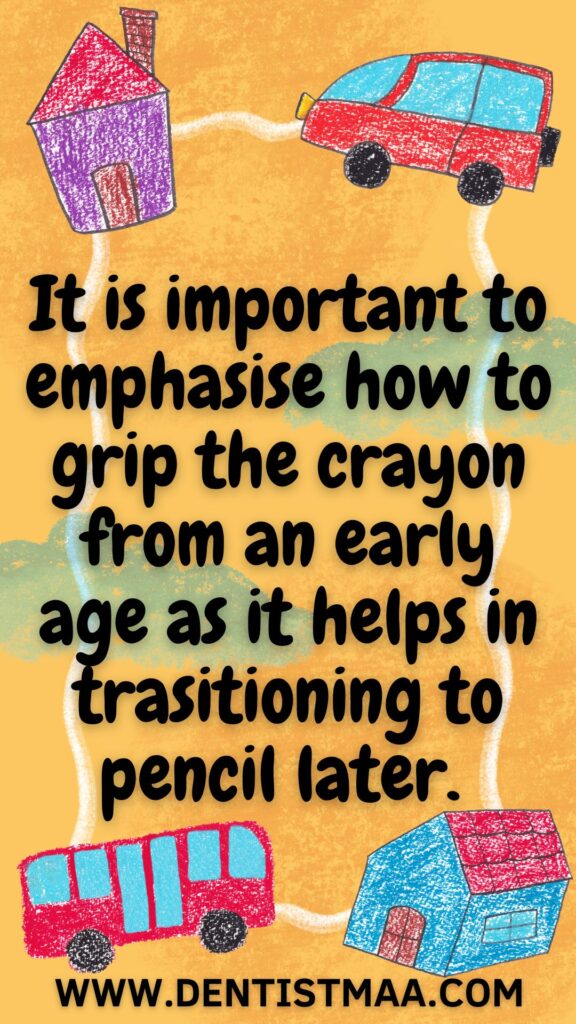
Why Proper Crayon Holding Matters
1. Fine Motor Skills Development
- Precision and Control: A proper grip helps children develop the precision needed for detailed tasks.
- Hand-Eye Coordination: Holding a crayon correctly enhances coordination between what the eyes see and how the hands move.
2. Preparation for Writing
- Pre-Writing Skills: Proper grip is a precursor to writing, making it easier for children to transition to pencils and pens.
- Letter Formation: Correct grip aids in the smooth formation of letters, improving handwriting.
3. Muscle Strength and Dexterity
- Hand and Finger Strength: A proper grip strengthens the small muscles in the hands and fingers.
- Dexterity Improvement: Enhanced dexterity allows for more complex and refined movements.
4. Injury Prevention
- Ergonomic Benefits: Using a proper grip reduces the risk of strain and injury to the hand and wrist.
- Comfort and Endurance: A comfortable grip allows for longer periods of drawing or writing without discomfort.
5. Cognitive and Creative Development
- Focus and Concentration: A proper grip supports better focus and concentration during activities.
- Creative Expression: Easier control over the crayon allows for more precise and imaginative artwork.
Tips for Encouraging a Proper Grip
- Early Introduction: Start teaching the tripod grip (thumb, index, and middle finger) as soon as the child begins using crayons.
- Demonstration and Practice: Show the correct way to hold a crayon and practice regularly.
- Use of Ergonomic Crayons: Provide crayons designed to promote a proper grip, such as triangular crayons.
- Positive Reinforcement: Praise and encourage efforts to use the correct grip.
- Consistent Guidance: Offer gentle reminders and adjustments to reinforce proper technique.
By emphasizing the importance of the grip from an early age, you can help children develop the foundational skills necessary for both academic success and creative exploration.
Benefits of Playing with Crayons
1. Fine Motor Skill Development
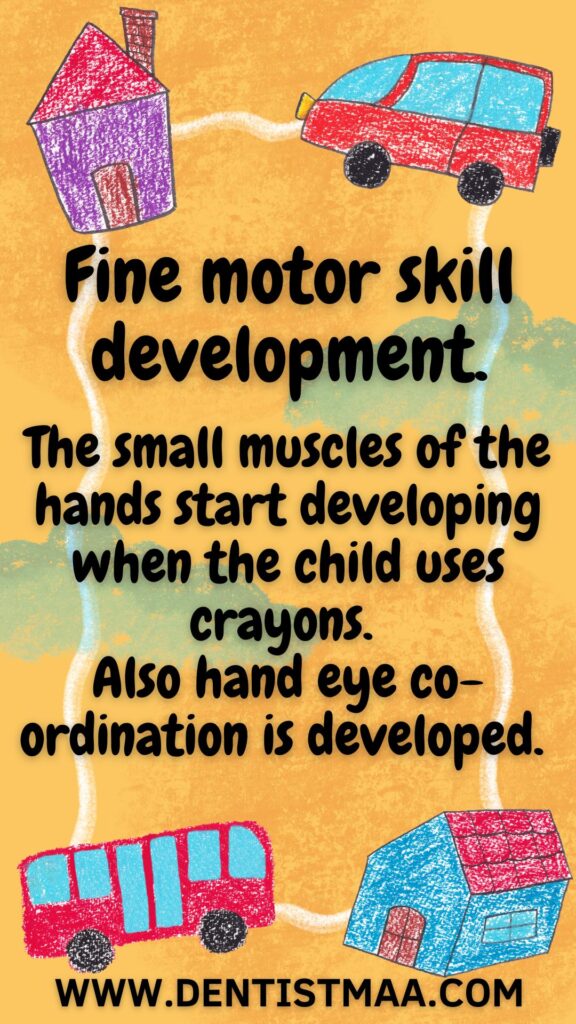
Using crayons helps toddlers develop fine motor skills. These skills involve the small muscles in the hands and fingers, which are essential for tasks such as writing, cutting with scissors, and tying shoelaces. As toddlers learn to hold and control crayons, they improve their hand-eye coordination and dexterity.
2. Creativity and Imagination
Crayon play encourages toddlers to express their creativity and imagination. By giving them the freedom to draw whatever they like, you allow them to explore their thoughts and ideas. This creative expression is a form of storytelling, helping them make sense of the world around them.
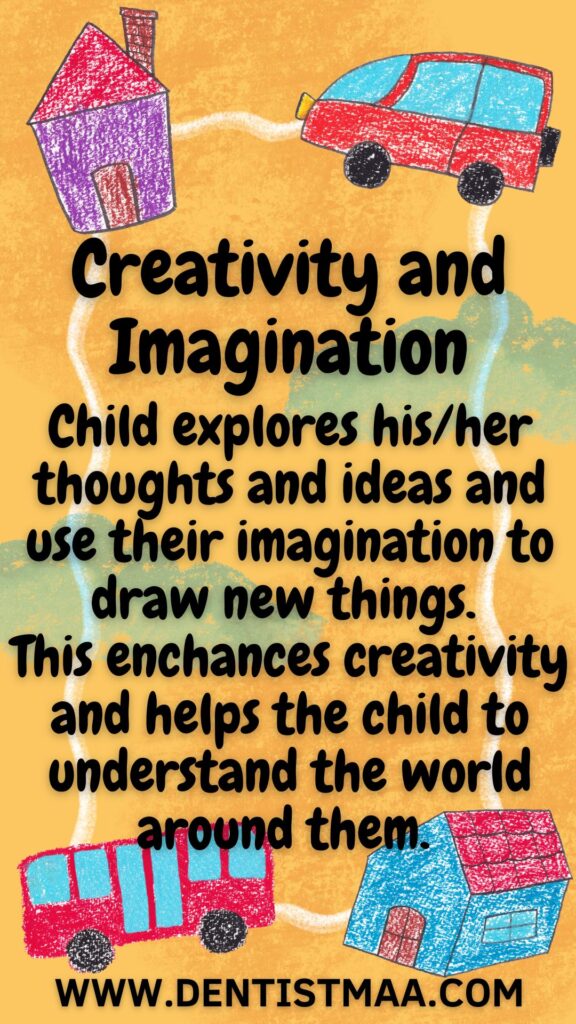
3. Cognitive Development
Drawing with crayons also stimulates cognitive development. When toddlers decide what to draw and choose colours, they engage in decision-making processes. This activity helps them understand cause and effect, develop problem-solving skills, and learn about spatial relationships.
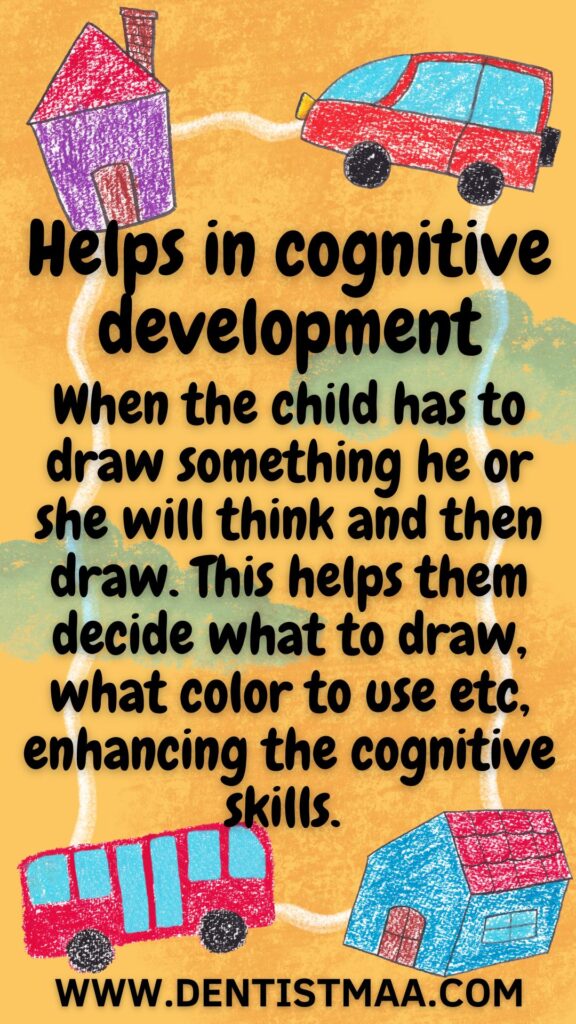
4. Emotional Expression
For toddlers, who often lack the verbal skills to express their emotions fully, drawing can be a powerful tool for emotional expression. They can convey their feelings through their artwork, whether it’s joy, frustration, or curiosity. This process can be very therapeutic and help them manage their emotions.
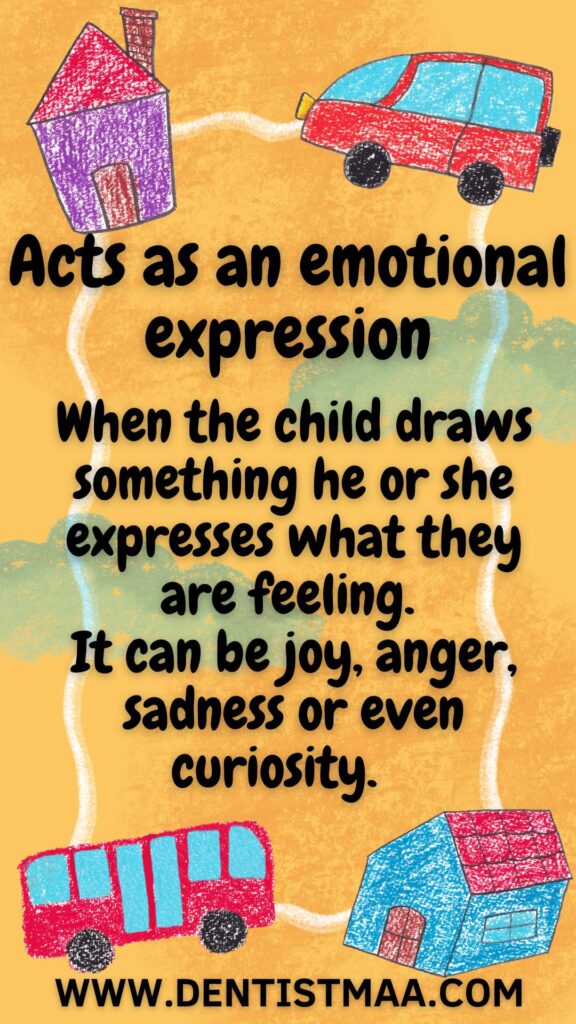
5. Language Development
Talking about their drawings encourages language development. As toddlers describe their artwork, they learn new vocabulary and practice sentence formation. Parents and caregivers can enhance this benefit by engaging in conversations about the drawings and asking open-ended questions to stimulate thinking and language use.
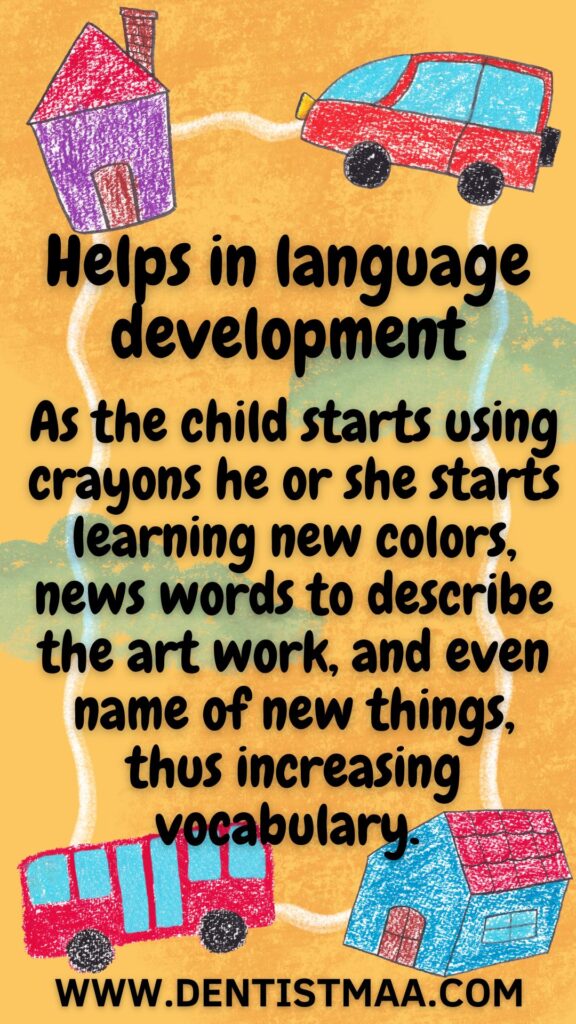
6. Social Skills
Crayon play can also be a social activity. When children draw together, they learn to share, take turns, and collaborate on projects. This interaction fosters social skills such as empathy, cooperation, and communication, which are vital for their overall development.
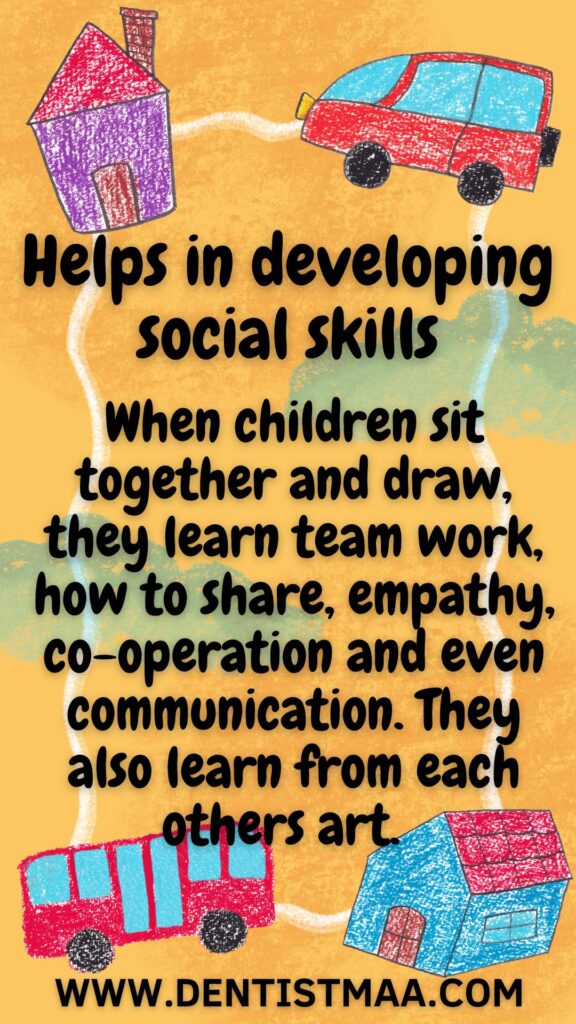
Incorporating the Montessori Approach
The Montessori approach emphasizes independence, freedom within limits, and respect for a child’s natural psychological, physical, and social development. Here’s how you can incorporate this philosophy into crayon play:
1. Prepared Environment
Create a prepared environment where crayons and paper are easily accessible to your toddler. This setup encourages independence and allows the child to choose when and what to draw. Keep the area organized and clutter-free to promote focus and creativity.
2. Child-Led Activity
Allow your toddler to lead the activity. Resist the urge to direct or correct their drawing. Instead, observe and support their efforts, offering help only when asked. This approach fosters self-confidence and a sense of accomplishment.
3. Real Tools
Provide real, high-quality crayons and paper. Avoid gimmicky or overly complex art supplies. Simple, durable tools respect the child’s ability to use them effectively and enhance their learning experience.
4. Emphasis on Process, Not Product
Focus on the process of drawing rather than the final product. Celebrate the effort and creativity involved in making the artwork. This mindset encourages a love for learning and exploration without the pressure of producing “perfect” drawings.
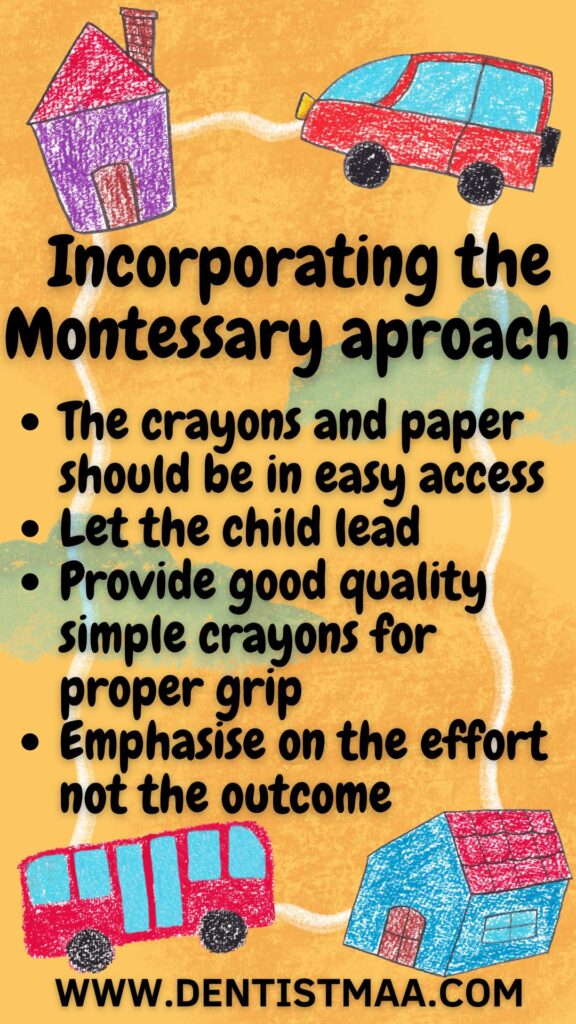
Tips for Positive Parenting During Crayon Play
Positive parenting involves providing a supportive and nurturing environment where children feel safe to explore and express themselves. Here are some tips to apply this approach during crayon play:
1. Provide Encouragement
Offer specific praise that acknowledges effort and creativity. For example, “I love how you used so many colours in your drawing!” This type of encouragement boosts self-esteem and motivates further exploration.
2. Be Patient
Understand that toddlers are still developing their skills. Be patient with their progress and avoid criticism. If they make a mess or struggle with holding the crayon, offer gentle guidance without taking over the activity.
3. Engage in Joint Activities
Join your child in drawing sessions. This shared activity strengthens your bond and provides an opportunity for you to model positive behaviours, such as persistence and problem-solving.
4. Celebrate Uniqueness
Recognize that each child’s artwork is unique. Avoid comparisons with other children’s drawings. Celebrate the individuality and personal expression reflected in your child’s creations.
5. Encourage Storytelling
Ask your child to tell you about their drawing. This practice not only enhances language skills but also gives you insight into their thoughts and feelings. It’s an excellent way to connect and communicate with your child on a deeper level.
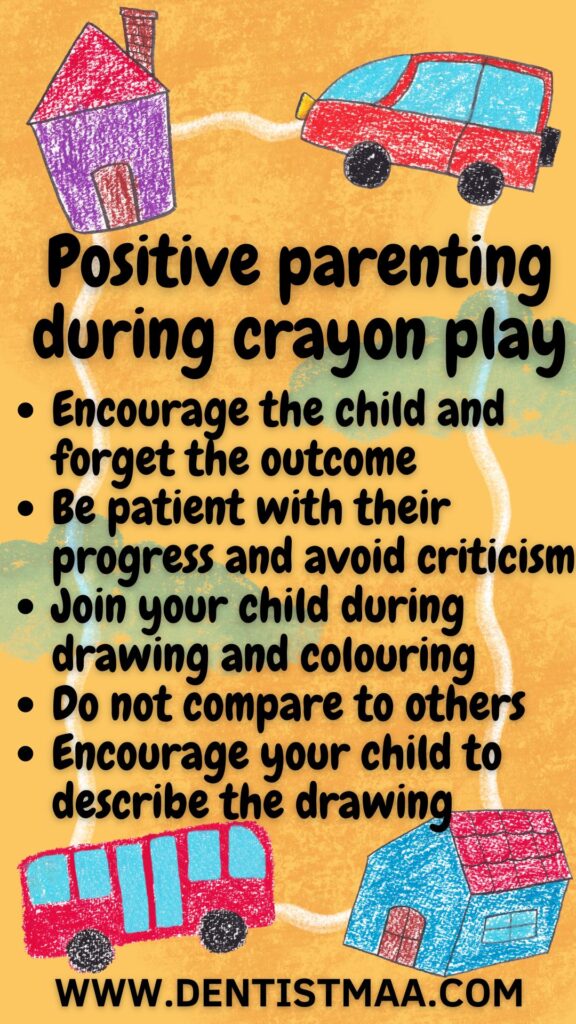
Conclusion
Playing with crayons is more than just a simple activity; it’s a powerful tool for development in toddlers. From fine motor skills to emotional expression, the benefits are vast and impactful. By incorporating the principles of positive parenting and the Montessori approach, you can create a supportive environment that nurtures your child’s growth and creativity. So, hand your toddler a crayon and watch them embark on a colourful journey of discovery and development.

